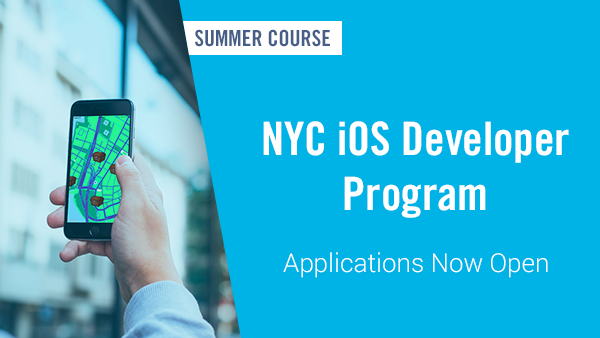Want to be an iOS Developer? 6 Swift Tips for Beginners

Note: Flatiron School no longer offers the iOS Developer Program. CNN Money calls mobile app developer the “best job of 2017.” Want to learn how to become one? Take a look at Senior iOS instructor Jim Campagno's six essential steps for learning Swift, Apple’s new iOS programming language. If you're interested in learning how to […]
Note: Flatiron School no longer offers the iOS Developer Program.
CNN Money calls mobile app developer the “best job of 2017.” Want to learn how to become one? Take a look at Senior iOS instructor Jim Campagno's six essential steps for learning Swift, Apple’s new iOS programming language.

If you're interested in learning how to make iOS apps (along with Swift 3) then I suggest you keep reading and follow through with the plan I have set out. It’s proven, tested and has gotten many people jobs in the iOS community.
1. Find one resource that serves as your “go-to.”
There’s an incredible amount of resources available online that will help you learn Swift & iOS. You need to do your research, find what suits you best and pick one. Don’t get bogged down by the process. I really think the free iOS/Swift Course we offer is the best place to get started. We have over 100 labs and readings along with a community of people who are already going through the course. You will be coding a lot!
-
Example of a lab: https://github.com/learn-co-curriculum/swift-dictionaryMethods-lab
-
Example of a reading: https://github.com/learn-co-curriculum/swift-MapFilterReduce-reading
2. Don’t go it alone.
Whether it be with a friend, or a community you find in a course online. You need someone (or something) to keep you on your toes. Being able to pair with someone else or bounce ideas/questions off of a community of people is crucial in making sure you become a strong developer. Frodo would have never solved that silly ring problem if it wasn’t for his friends.
3. Code. Code some more.
The key is being consistent. Day in and day out you should be dedicating some time to coding. There’s enough labs offered in our course to make sure you adhere to this rule. Don’t get down on yourself if you miss a day or two (or three), but just make sure you pick yourself back up and keep on going. Will there be people that grasp concepts faster than you? Of course. Will there be people that tell you you should study computer science first? Yes. But stick with it, this is about you becoming an iOS developer. It’s not about reading or coding something once and expecting it to stick and become something you memorize after the first try. It requires time and effort, so just keep on going and I guarantee you after a few months the results will be incredible. You will be able to make iOS apps!
4. Accompany your writing of Swift code with reading Apple’s Swift Book**.**
If you live in NYC and you travel on the subway (or however you travel to work where you’re not driving), make it a habit to read this book (often!). If you get confused by anything, Google it. Find someone else explaining that similar topic in a different manner. This helps, a lot. Then re-read the part you got confused about in the Apple Book. Don’t expect to read something once and have it stick. This is programming, not baking brownies from the recipe on the back of a box.5. Have others review your code. Whether that be you at the very least communicating out-loud as to the code you’re writing or going over it with a friend. Being able to communicate what you’re doing in code and speak through it is important to solidifying the basics and building a strong foundation for yourself. Don’t build up a habit of just finishing labs or readings to say that you were able to finish it in x amount of time. It’s not about that. It’s about you grasping the topics and making sure you can take that knowledge with you when you build your own iOS apps.
6. Use the great resources available to you.
There are so many resources out there to help you learn Swift! My favorite are the following:
-
Swift Talk (this is a little advanced)
Disclaimer: The information in this blog is current as of March 31, 2017. Current policies, offerings, procedures, and programs may differ.



